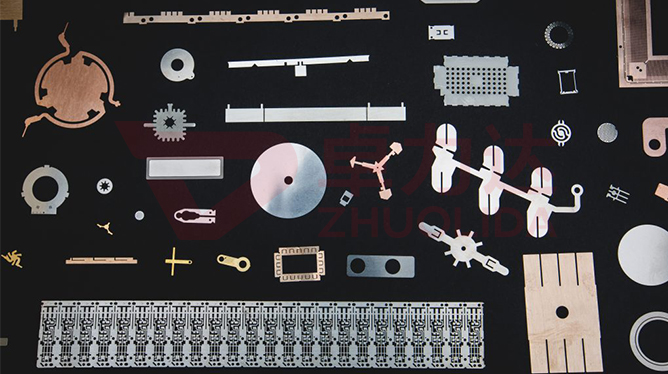
The etching process is an important technique for creating patterns or shapes on metal surfaces by using chemical or electrochemical methods to remove some of the material from the metal surface. This process has a wide range of applications in many fields such as microelectronics, optics, decoration and medical. The advantages and disadvantages of the etching process are described in detail below.
Advantages of metal etching process:
1. High precision and consistency: the metal etching process allows for very precise fabrication of fine shapes and patterns, which is critical in many applications. At the same time, the consistency of the metal etching process allows each product in mass production to have the same quality and characteristics.
2. Wide range of materials: The etching process can be applied to a variety of metals, including copper, nickel, gold, silver, iron, etc., as well as certain non-metallic materials. This wide applicability makes the etching process used in many different fields.
3. Environmental protection: Compared with some manufacturing processes, metal etching process produces relatively little waste, and in many cases can be recycled and disposed of. This gives the etching process an advantage in terms of environmental protection.
4. Flexibility: The metal etching process can be used to create a variety of different patterns and shapes, from simple two-dimensional graphics to complex three-dimensional structures can be easily realized. This flexibility allows the etching process to meet design requirements in many applications.
5. High efficiency: etching process is usually mass produced, which makes the production efficiency greatly improved, while reducing the cost of each product.
Disadvantages of Stainless steel etching process:
1. Complexity and skill requirements: The stainless steel etching process requires precise control of the concentration and temperature of the chemical solution, as well as factors such as stainless steel etching time. These factors, if not properly controlled, may affect the quality and consistency of the product.
2. Chemical use: Although the etching process produces relatively little waste, it still involves the use of some chemicals such as acids, alkalis and organic solvents. These chemicals, if not handled properly, can be harmful to the environment and worker health.
3. Equipment costs: The stainless steel etching process requires specialized equipment and facilities, such as etching tanks, power supplies, heat exchangers, and so on. The price of these equipment and facilities may be higher, increasing production costs.
4. Waste disposal: Although the etching process produces relatively small amounts of waste, it still needs to be treated. Waste disposal takes time and money, and some waste may be harmful to the environment, so it needs to be handled carefully.
5. Manufacturing costs: Although the stainless steel etching process can improve production efficiency, but the manufacturing cost is still relatively high. This is due to the need to use specialized equipment and materials, as well as the need for precise control of the production process to ensure product quality and consistency.
6. Precision control: the precision control of the etching process is critical to the quality and consistency of the product. If there is an error in the stainless steel etching process, it may lead to product size deviation, surface roughness and other problems. This may adversely affect the performance and use of the product.
7. Health and safety issues: The stainless steel etching process involves the use of chemicals and some high-temperature operations, so health and safety issues may arise. Workers may be exposed to hazardous factors such as chemicals, high temperatures and noise, so appropriate health and safety measures need to be taken to protect the rights and interests of workers.
In summary, the etching process has the advantages of high precision, consistency, wide range of materials, environmental friendliness, flexibility, and high efficiency, but it also has the disadvantages of complexity and skill requirements, chemical use, equipment costs, waste disposal, manufacturing costs, precision control, and health and safety issues. These factors need to be considered and measures taken when applying etching processes to ensure product quality and sustainability of the production process.
Contact: andy_Lai
Phone: 18938693450
E-mail: yw9@zldsmt.com
Add: Building A3, Huafa Industrial Park, Fuyong Town, Fuyuan Road, Fuyong Town, Baoan District, Shenzhen,China